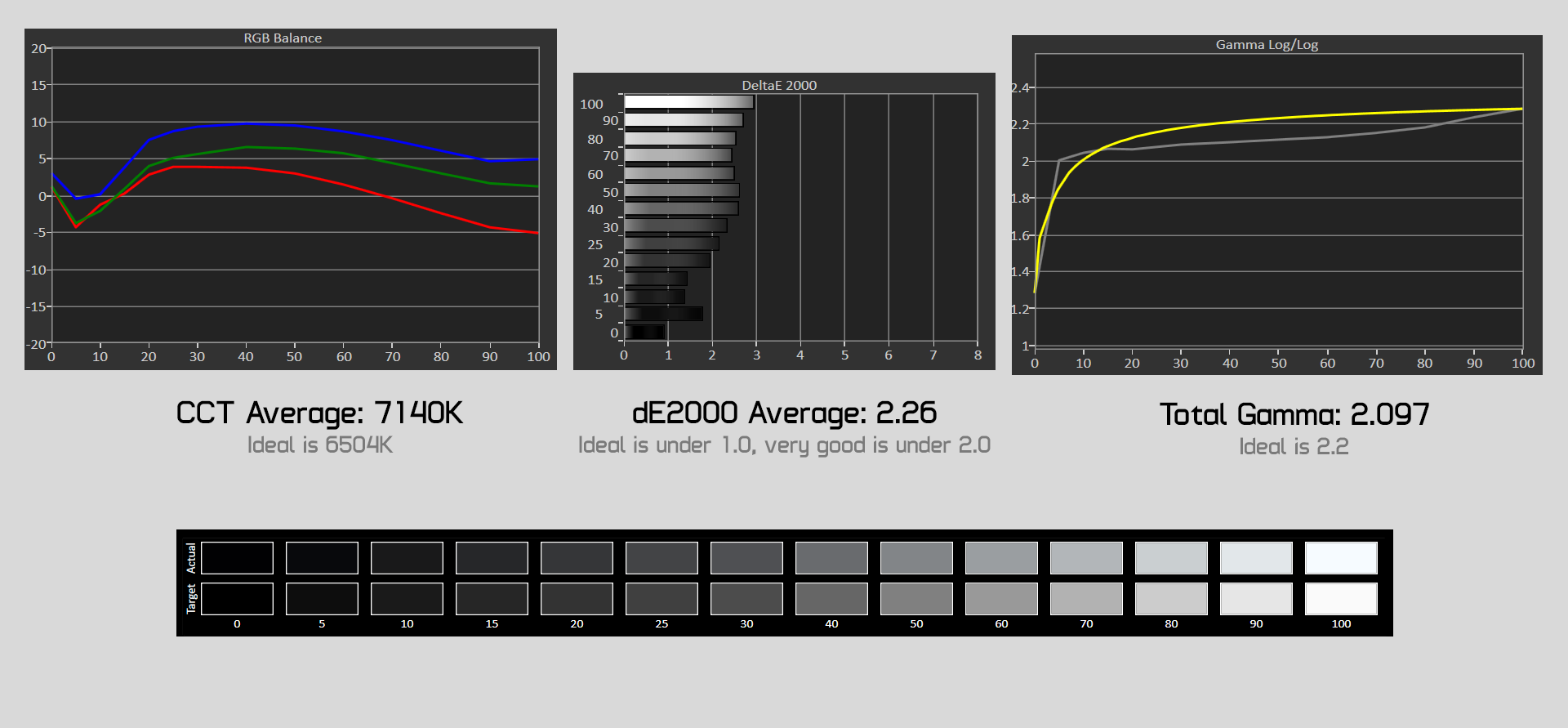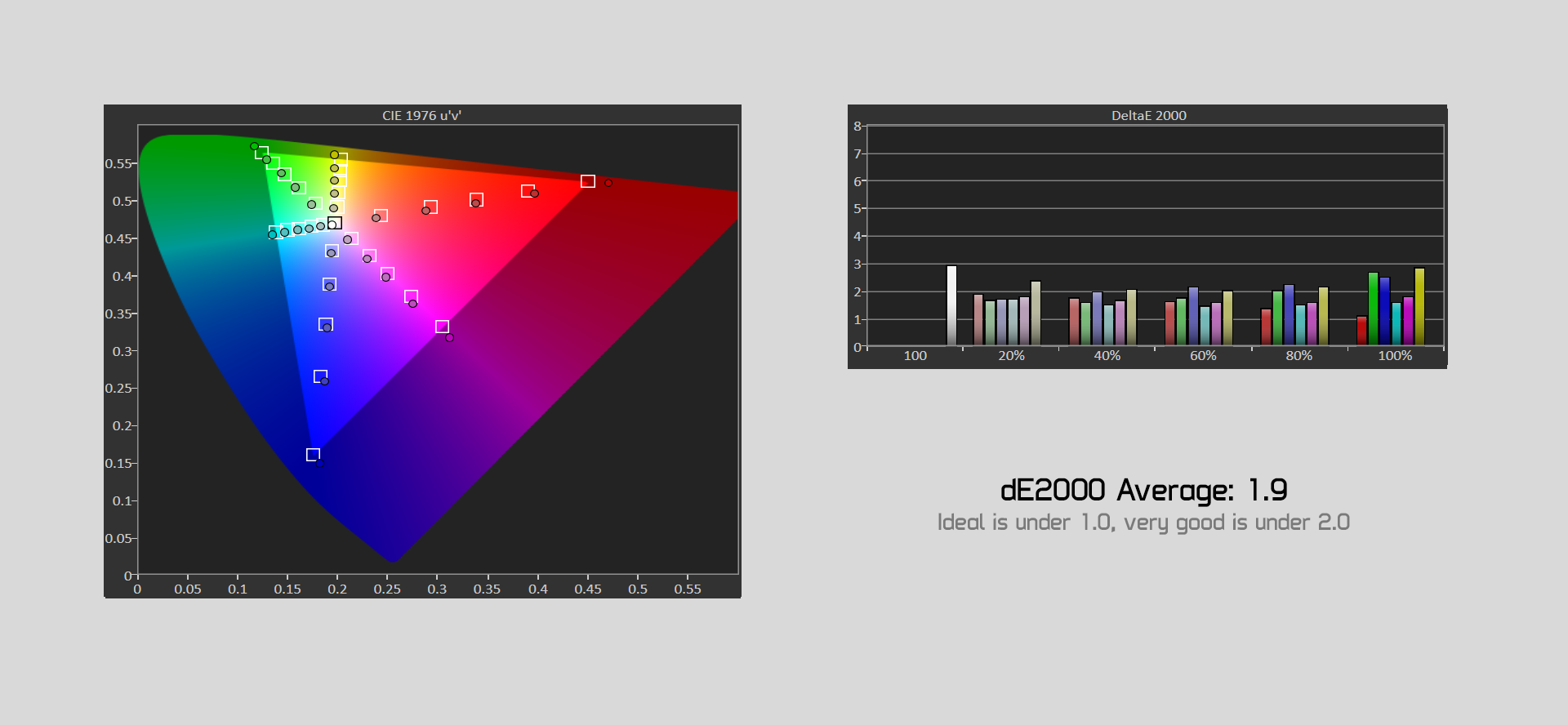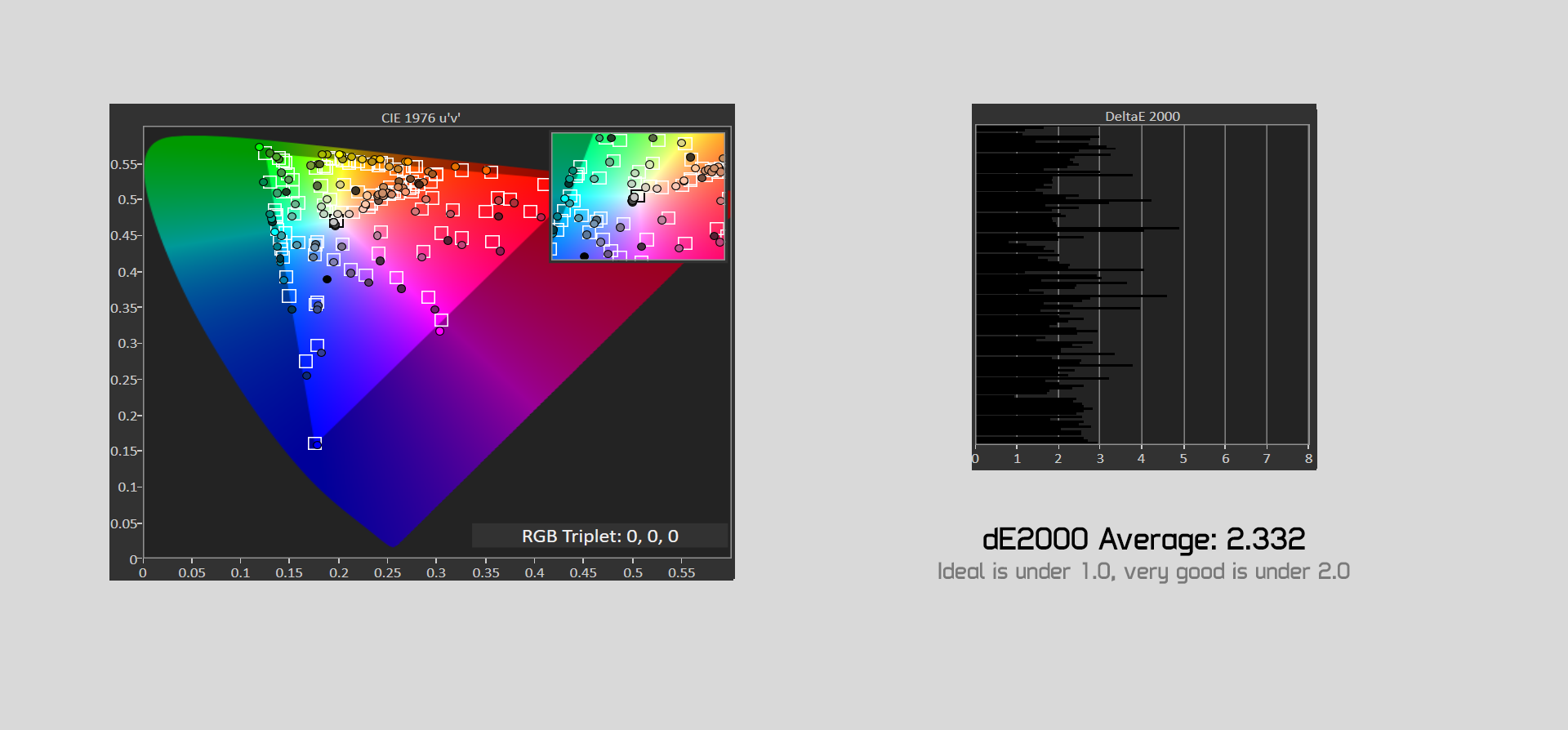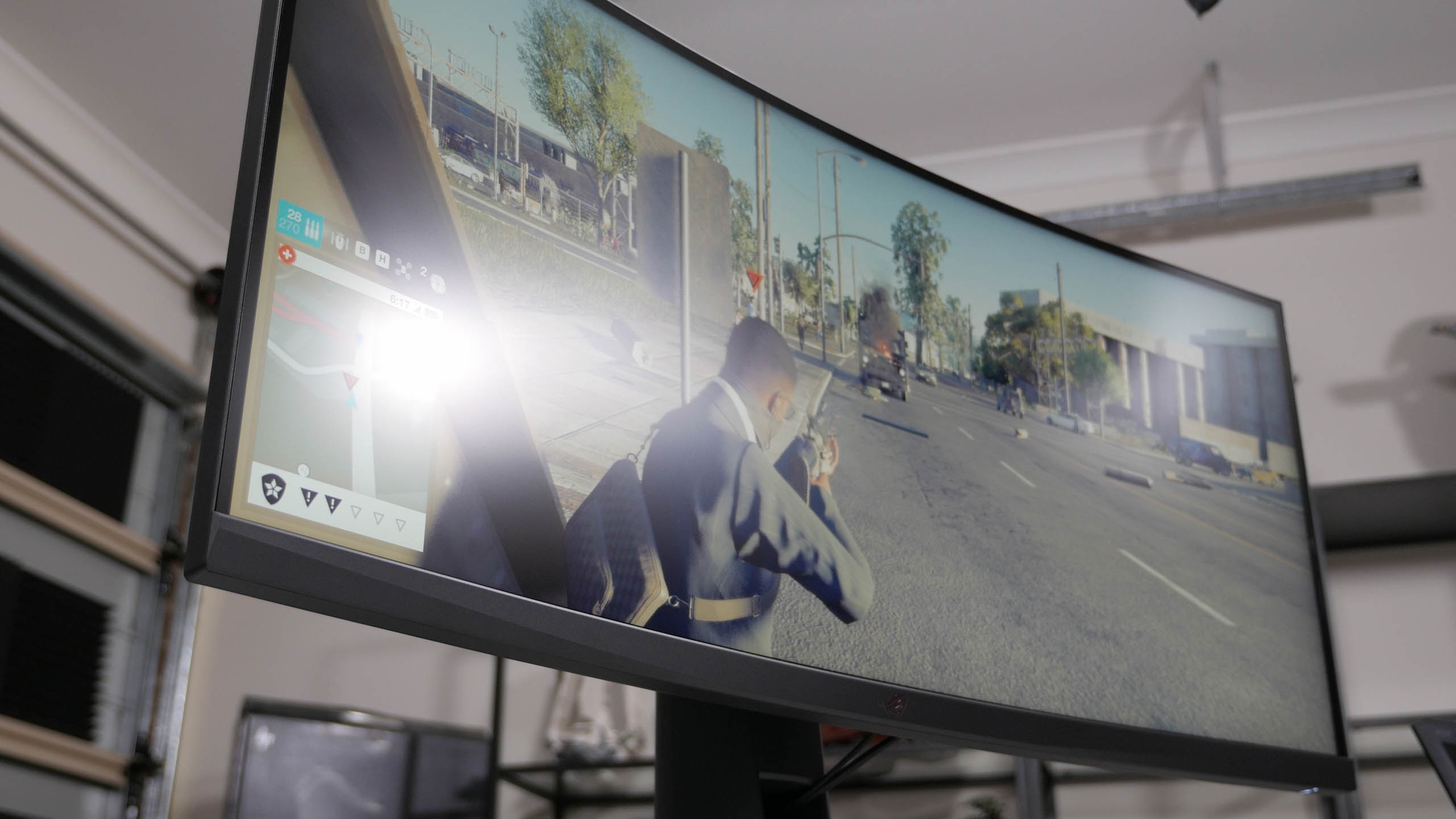Color Performance and Calibration
Default Calibration
So let's talk about color performance. By default, the XG35VQ is set to 340 nits of brightness by default, which is very high for normal usage. Greyscale performance is good, with a default deltaE average of 2.25 and an okay, though not fantastic CCT average of 7140K and gamma just shy of 2.1. I've seen better greyscale calibration out of the box, but this isn't bad at all.



Saturation results are good, with a deltaE of 1.88, and this follows through to ColorChecker with a deltaE of 2.31. For the best results I'd be looking for sub 1.0 results as always, but anything around that 2.0 mark is still classified as good. And as advertised, the XG35VQ does support basically 100% sRGB coverage, which is the bare minimum these days.
On-Screen Display Only Calibration
As always, a few OSD tweaks can improve the experience. I'd ignore the garbage sRGB mode entirely and stick purely to manual tweaks. The changes I made you can see here, and it's all fairly standard stuff, though of course there is natural variance between displays and these might not be the best settings for everyone.
| Setting | Default | Calibrated |
| Brightness | 90 | 44 |
| Contrast | 80 | 80 |
| Color Mode | Warm | User R: 100 G: 97 B: 95 |
| Gamma | 2.2 | 2.2 |
| Overdrive | Level 3 | Level 5 |



Aside from correcting the brightness, these changes only made a minor difference to performance, with most of the improvements coming in greyscale. The deltaE average is now down at 1.80 and the CCT is fixed somewhat, though you can see in the curve of the graph that this is never going to be fully resolved without proper calibration. Saturation and ColorChecker results are largely unchanged.
Full Calibration
However you can achieve excellent performance with a full display calibration through SpectraCAL's CALMAN 5. With only a small hit to the contrast ratio - now 2098:1 - greyscale performance improved to an excellent deltaE under 0.5 and a CCT average basically dead accurate. Gamma as well sits at a very solid level. Then looking at the saturation and ColorChecker results, you can see that calibration has pulled in these figures to a sub-1.0 deltaE average and even a maximum deltaE of just 1.67, which is really good.



Of course for color accurate usage, the uniformity of this display does hold it back from being suitable for professional work, and software calibration profiles aren't an ideal way to solve accuracy issues. But for a gaming-focused monitor, a few tweaks can lead to excellent results, and that's always great to see.
However, and this really is a killer for this display, my review unit of this monitor did ship with a single dead pixel in the middle of the panel. I have no idea how common this is among all XG35VQs out there, but it's rare for me to buy or review a panel with a dead pixel, so make of this what you will.
